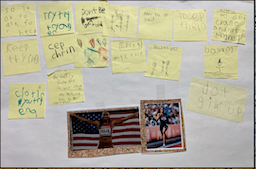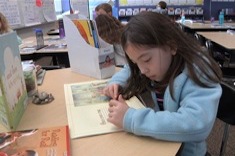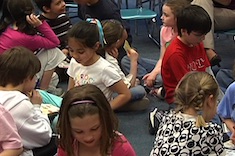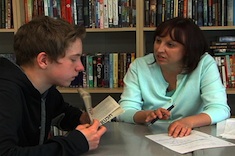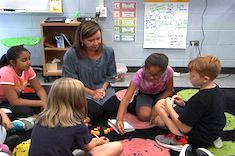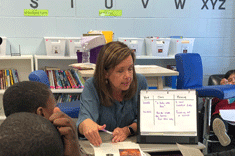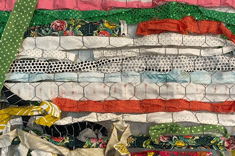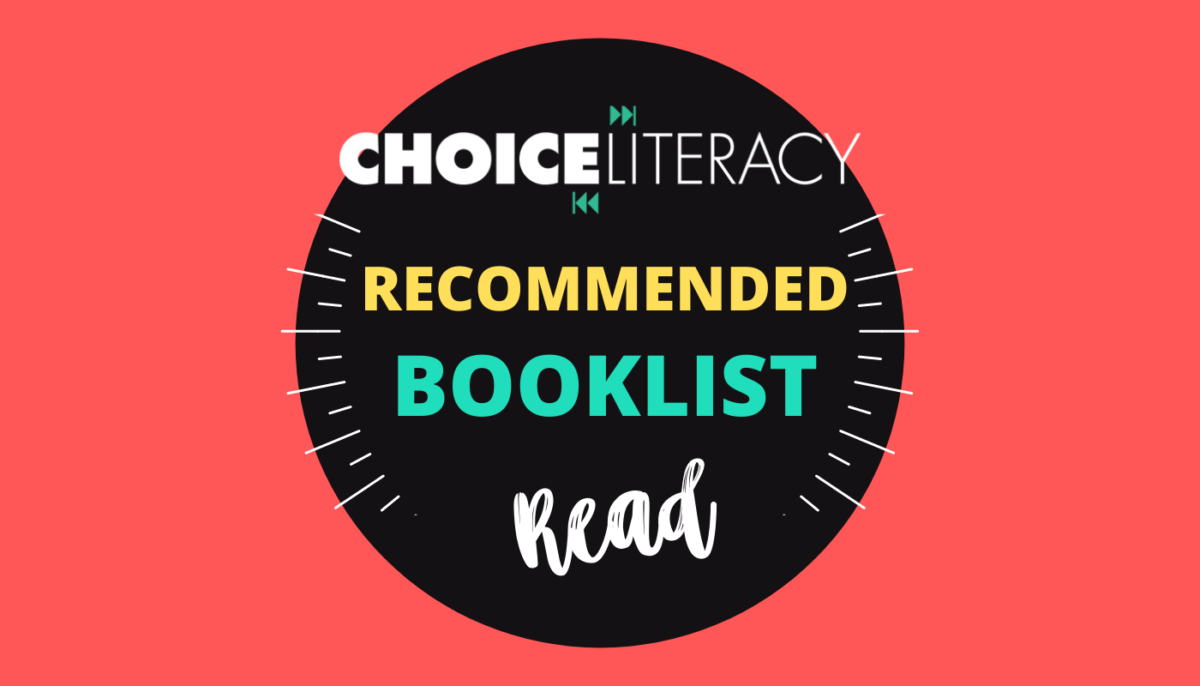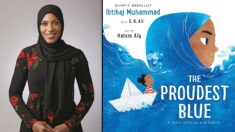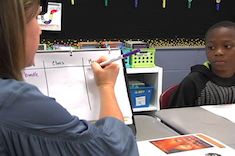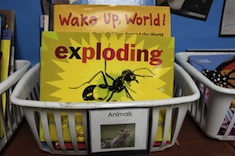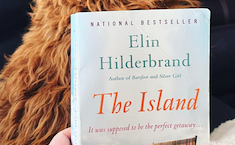Articles
Here is where you’ll find all the latest print features from our contributors. If you’d like to browse specifically by grade level, topic, or contributor, you can use the links in the right sidebar.
Latest Content
Hands-Down Conversations in the Primary Grades
Tammy Mulligan shares the steps to encouraging hands-down conversations in the first days of the school year. This is the second installment of a three-part series about launching hands-down conversations.
Establishing Independent Reading Is Like Planting Seeds
Lisa Mazinas reminds us of the importance of independent reading and how to set it in motion.
Using Video to Launch Hands-Down Conversations
Tammy Mulligan shares many video options to launch conversation skills in her primary classroom.
Reading Threads
Christy Rush-Levine guides us to make reading recommendations based on what students enjoy most about a book they recently read. Christy used to make recommendations based on the genre or topic, but she has learned to listen to students to discover the reason they loved a recent read and use this information for recommendations.
Opportunities Offered in Book Shopping
Tara Barnett and Kate Mills remind us of the important opportunities offered during book shopping. Giving yourself permission to slow down and see the opportunities that the routines invite for collaboration and reflection will likely make it feel like you’re maximizing your minutes even more.
Holidays: Where Do They Fit in the Classroom?
Bitsy Parks shares the inspiration and practical ways she celebrates and honors holidays from many cultures in her classroom.
Making Queer Inclusivity Less Complicated
Gretchen Schroeder intentionally uses tried-and-true instructional practices to increase the inclusivity of texts and topics in her high school English class.
The Tale of Two Boys
Dana Murphy shares a moment when she realized she needed to educate herself and dismantle some white-centered teaching practices.
The Best Advice for Keeping Students at the Heart of Lesson Plans
Bitsy Parks shares her best advice for lesson planning in a way that keeps the focus on students. She encourages finding joy in the planning process by observing them.
Reading Specialists Can Change the Narrative
Cathy Mere shares ways reading specialists can help teachers get excited about striving readers’ growth by intentionally sharing progress and celebrations.
Setting Up the Intervention Room
Dana Murphy guides reading specialists in setting up intervention rooms to welcome readers.
What Matters More
Dana Murphy shares that by asking “What matters most?” she can make decisions that allow her literacy instruction to be student-centered and authentic.
Using Daily Attendance Questions to Build Community and Communication Skills
Gretchen Schroeder is surprised to find benefits of a stronger community and communication skills through a practical attendance routine in her high school classroom.
What I Am Reading the First Week of School
Jen Court plans to fill the first days of first grade with experiences around books. Selecting books carefully to create a sense of community in the classroom from the very beginning is the goal of this first-week booklist.
Poems to Start the Year
Tara Barnett and Kate Mills share poems to start the year that touch a variety of needs, from building community to connecting with colleagues to hosting parents for back-to-school night.
Honoring Student Identity (Download a Survey)
Tara Barnett and Kate Mills share their authentic process for expanding their beginning-of-the-year student survey to make it more open for all students.
Creating a Classroom Emotional Intelligence Charter
Mandy Robek outlines the process for creating a class Emotional Intelligence Charter. She includes a booklist to help students expand their vocabulary of different emotions.
Befriending Characters in Times of Grief (Booklist)
Melissa Quimby shares a booklist that offers comforting characters to befriend in times of grief. This is a staple for all classrooms.
Bring Me Something Funny (Booklist)
Cathy Mere offers a booklist in response when a teacher asks her to “Bring me something funny.” These books are sure to fill your classroom with lighthearted laughter.
Using The Proudest Blue in the Classroom
Tara Barnett and Kate Mills share three ways using The Proudest Blue by Ibtihaj Muhammad empowers and strengthens readers in all grades.
Join a Reading Community
Jen Vincent invites all educators to join a reading community by participating in the kidlit version of It’s Monday! What Are You Reading?
Branching Out: Allowing New Influences on Our Pedagogy
In this second part of a series on educational theorists, Gretchen Schroeder shares the way she has branched out to evolve and adapt to serve all students in an equitable way. Her reflection inspires all of us to branch out to make space for new ideas.
Studying Character in Intermediate Grades
Dana Murphy leads us in a step-by-step process to take tried-and-true reading strategies to a more sophisticated level to support students as they grow in interpretation.
Interpreting Figurative Language
Tara Barnett and Kate Mills step us through an intentional process to help students understand and interpret figurative language. Using Long Way Down by Jason Reynolds as a mentor text, Tara and Kate give students the skills and confidence to find deep meaning in texts. Download an Interpreting Figurative Language chart to support your students in learning to interpret figurative language.
Creating Thematic Text Sets for Inquiry
Stephanie Affinito guides us to carefully curate text sets so that not only are they suited to students’ interests, but students are guided through the sequence of reading them. There’s no better way to launch students’ curiosity and reading motivation!
Maintaining an Adult Reading Life
Are you wondering how to maintain a reading life as a busy adult? Dana Murphy shares her secrets and insights that will have all of us prioritizing our own reading lives.
Five Books for Teacher Reflection
Stephanie Affinito offers five picture books to encourage teachers to relax and consider how to prioritize their own wellness.
Transitional Chapter Books: A Deeper Look at Features and Formats (Booklist)
Josie Stewart and Hannah Tills share a robust booklist for transitional chapter books. There is more incidental representation than ever, and a variety of formats welcome young readers to chapter books.
Intergenerational Booklist
Bitsy Parks shares the process of building a booklist to deepen the connections and synthesis of culture, family structure, and experiences. Use this booklist of 10 picture books to lead a powerful conversation in your classroom and empower young students to grow in their analysis.
Reflecting on My Roots
In this first of a two-part series, Gretchen Schroeder reflects on three educational philosophers who ground many practices, and pushes us to not stay stuck in the past. We must adapt these practices and honor new voices in the field that will keep us moving forward.
Browse Content By
Type
Category
- Assessment Tools
- Big Fresh Archives
- Booklists
- Choice Numeracy
- Classroom Design
- Common Core
- Community Building
- Conferring
- Content Literacy
- Digital Literacy
- English Language Learners
- Equity
- Family Relations
- Free Samples
- Guiding Groups
- Leadership
- Literacy Coaches
- Mentor Texts
- Minilessons
- New Teacher Mentors
- Podcasts
- Poetry
- Quote Collections
- Reading Strategies
- Self Care
- Struggling and Striving Learners
- Talking and Listening
- Teacher Study Groups
- Teaching Reading
- Teaching Writing
- Word Study and Vocabulary
Author
- Melissa Quimby
- Nawal Qarooni
- Gwen Blumberg
- Julie Cox
- The Lead Learners
- Hannah Tills
- Josie Stewart
- Ruth Metcalfe
- Mallory Messenger
- Becca Burk
- Jodie Bailey
- Vivian Chen
- Mary Brower
- Tiffany Abbott Fuller
- Stephanie Affinito
- Ruth Ayres
- Leigh Anne Eck
- Heather Fisher
- Shari Frost
- Julie Johnson
- Suzy Kaback
- Gigi McAllister
- Shirl McPhillips
- Melanie Meehan
- Cathy Mere
- Debbie Miller
- Tara Barnett and Kate Mills
- Tammy Mulligan
- Dana Murphy
- Bitsy Parks
- David Pittman
- Brenda Power
- Heather Rader
- Matt Renwick
- Mandy Robek
- Christy Rush-Levine
- Gretchen Schroeder
- Jen Schwanke
- Brian Sepe
- Katherine Sokolowski
- Stella Villalba
- Jennifer Vincent
Grade Level
Choice Literacy Membership
Articles
Get full access to all Choice Literacy article content
Videos
Get full access to all Choice Literacy video content
Courses
Access Choice Literacy course curriculum and training

